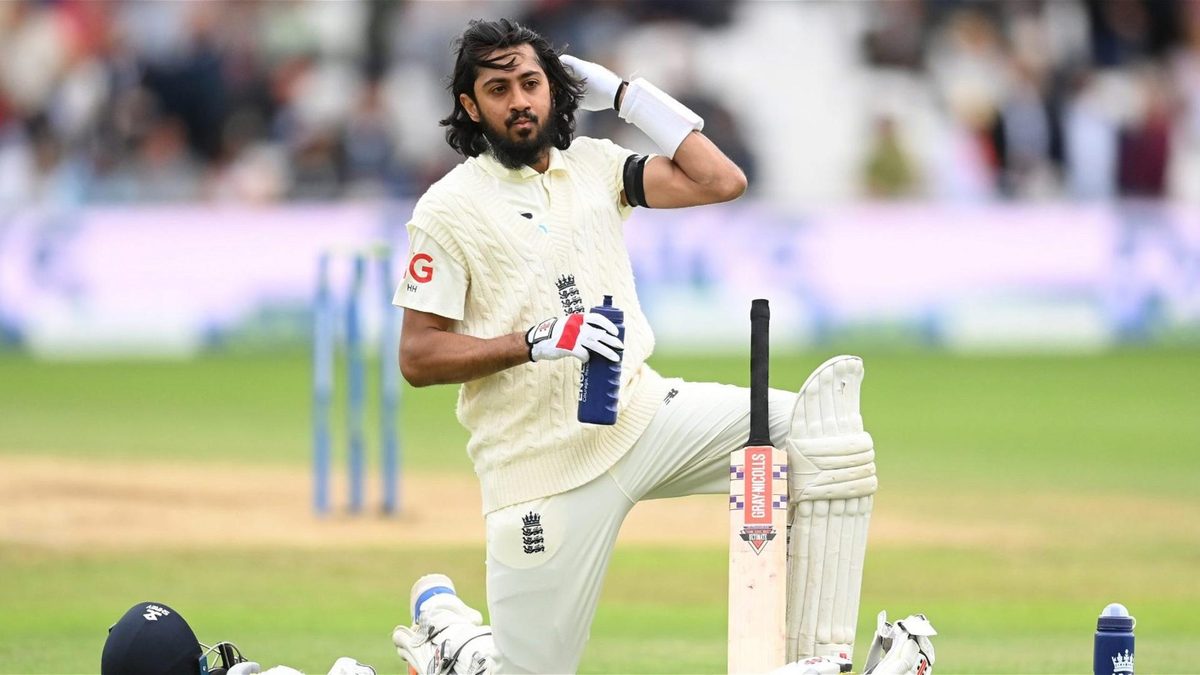
Ben Gardner urges caution despite Haseeb Hameed’s promising innings in the third England-India Test.
As Haseeb Hameed strummed his way, alongside Rory Burns, to England’s highest opening stand since his own Test debut all the way back in 2016, it was hard not to think of Dom Sibley, sat at home, settling in to watch his first Test out of the England side in nearly two years, wondering what he’d done to deserve his luck. The last throes of his first stint as a Test cricketer were characterised by him battling and grinding through parsimonious periods of testing bowling, without a freebie in sight. Then, with Hameed promoted to open in his place, Ishant Sharma sent down a surfeit of short, wide balls and ease the progression of a comeback tale just getting started.
Still, if Sibley is really honest with himself, he’d reflect that he would probably have left most of the long hops, and Hameed did put them away stylishly. It wasn’t just the cut shots on the first evening either, but the proactivity of his tipping and running, the psychic communication with Rory Burns, the surety and elegance of his forward block, feet prancing after ball hit bat, eyes tracing the path of the ball as it bounces up, drops down, before bobbling back along the pitch towards the bowler.
There’s just so much to fall in love with. The half-smile, buried beneath a man’s beard but as boyish as ever. The shrugged raise of the bat upon reaching fifty with an edge dropped at slip, almost as if he’s mimicking a Test cricketer in a playground knockabout. And then of course there’s the story, the rise, fall and rise again, with Hameed seemingly set to finally claim his rightful place atop England’s batting order, settling in for the long innings across the next decade or more.
And yet, his struggle on the second morning painted a different, and probably more accurate picture, of where Hameed is now. Even on that first day, with the Ishant handouts and the dashed singles, he still scored at less than a run every two balls. Then, if you were being optimistic in the way everything about Hameed encourages you to be, you could believe it was simply him riding the rhythms of a still-very-good bowling attack, that the periods of flow and interludes of pause were simply the sign of a batsman skilled at building an innings.
On day two there was none of that, with 65 balls bringing just eight runs, Hameed comatose before Ravindra Jadeja turned one past his forward grope to end his stay. India’s seamers bowled fuller and fuller and he chose not to drive. Short balls went ducked, not attacked. The dropping and setting off was nowhere to be seen. Without balls to hit, there was little ability or desire to manufacture something to transfer some pressure back.
This, in itself, is nothing to be worried about. Hameed’s innings still set the platform for what really should be a match-winning total. Being tied down for an hour or so happens to even the best batsmen. He is only three innings into a comeback which it’s hoped will span an era.
But it’s hard not to wonder if, right now, that might be about Hameed’s level. The second-morning passage of play evoked the late-career efforts of the man he replaced, more than anything, and it might be that Hameed’s output, right now, is not too dissimilar to that of Sibley, last summer at least, before the criticism and the failures finally wore him down. Both are slow scorers with, at most, a second gear – Hameed’s strike-rate is actually lower than Sibley’s in both Test and first-class cricket. And while the overall red-ball record tells so little of the tale, containing a dominant debut season as a teenager and a campaign in which he averaged single figures, an average of 33 or thereabouts might be about what to expect in Test cricket as it stands. Hameed’s ceiling is higher than Sibley, but right now, if both are in form, there’s not much to split them.
Again, there’s nothing wrong with that. Hameed can be both baby Boycott, the best opener England have produced since Alastair Cook and not quite the finished article yet. Averaging in the low 30s and blunting the new ball is a valuable role in England, even if some of their fans don’t think it is. The important thing is those supporters give Hameed time, allow him to ride out the tough periods, make his way and find his game. He might have looked ready-made on Test debut, but this is a young player of whom it’s important not to expect too much. More than anything, we must appreciate the player Hameed is right now rather than wishing he already was what he might become.








